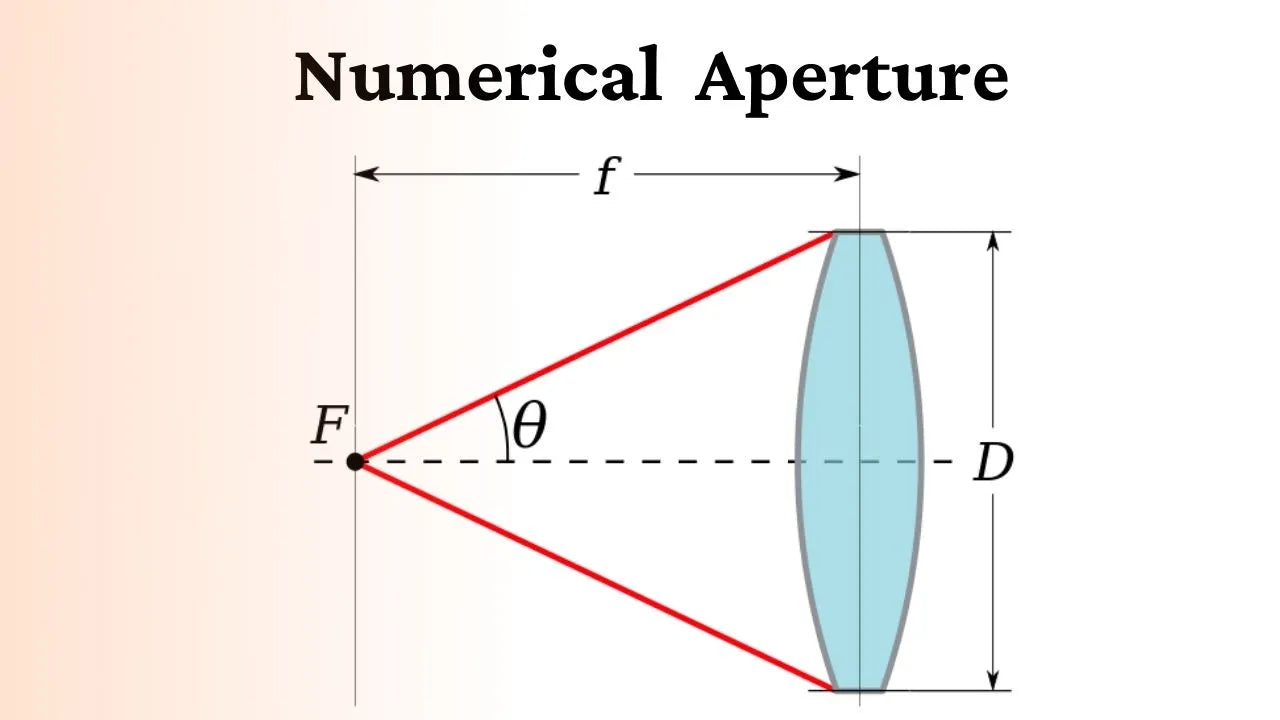
Source: Wikipedia
Understanding Numerical Aperture in Optical Systems
Introduction to Numerical Aperture
Numerical Aperture (NA) is a fundamental concept in optics, describing the light-gathering ability of an optical system. It is crucial in determining the system’s resolution and brightness. The NA is defined as the product of the refractive index of the medium through which light enters and the sine of the maximum angle of light that can enter the system.
Numerical Aperture in Lenses
The numerical aperture of a lens is a measure of its ability to gather light and resolve fine details. It is determined by the lens’s diameter and focal length. In simple terms, a lens with a larger NA can capture more light, resulting in brighter and sharper images. However, using the lens’s full area is often not recommended due to potential spherical aberrations.
High-NA Lenses
High-NA lenses are essential in applications requiring precise light focusing, such as in optical data storage and laser beam collimation. These lenses can focus light to small spots, which is crucial for reading and writing data on optical discs like CDs and DVDs.
Numerical Aperture in Microscope Objectives
In microscopy, the numerical aperture is a critical parameter that influences image brightness and resolution. Microscope objectives with high NA can collect more light and provide higher resolution images. Some objectives use immersion oil to increase the NA beyond 1, allowing for even finer detail resolution.
Importance of NA in Microscopy
- Image Brightness: A higher NA allows for brighter images, as more light is collected.
- Resolution: The NA sets a limit on the smallest resolvable details in an image.
- Depth of Field: High NA results in a smaller depth of field, meaning only objects within a narrow range of distances are in focus.
Numerical Aperture in Optical Fibers
Optical fibers utilize numerical aperture to define the maximum angle at which light can enter the fiber and still be guided through it. This is particularly important in step-index fibers, where total internal reflection is used to transmit light efficiently.
NA and Fiber Performance
The NA of a fiber influences its guiding properties, mode support, and bend losses. Higher NA fibers can support more modes and are less susceptible to bending losses, but may experience higher propagation losses due to scattering.
Conclusion
Numerical aperture is a vital concept in various optical applications, from lenses and microscopes to optical fibers. Understanding NA helps in designing systems that maximize light collection, resolution, and efficiency. As technology advances, the role of numerical aperture continues to be critical in the development of high-performance optical systems.
This blog post provides a comprehensive understanding of numerical aperture, its applications in different optical systems, and the implications for performance and design.

Source: AMZ Instruments
Feel free to comment your thoughts.



